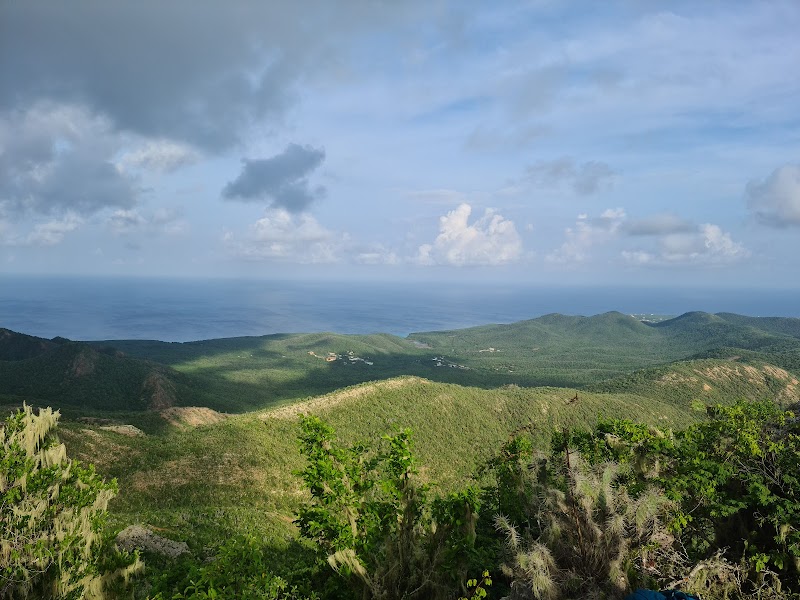Exploring Curaçao’s Southwest Coast: Best Scenic Coastal Walks and Marine Trails
Discover the rugged beauty of Curaçao’s southwest coast through scenic coastal walks and marine trails. From rocky shorelines to vibrant underwater spots, this guide offers practical advice and vivid descriptions to help you plan your adventure along some of the island’s most engaging paths.
Start Early to Beat the Heat
Begin hikes before 9 AM when temperatures are cooler and winds are gentler, reducing risk of heat exhaustion.
Wear Sturdy Footwear
Choose shoes with good grip and ankle support to handle loose coral, rocky terrain, and uneven coastal paths.
Hydrate Generously
Carry at least 2 liters of water per person to prevent dehydration on dry and exposed trails.
Respect Wildlife and Trails
Stick to marked trails to protect fragile native plants and avoid disturbing marine and bird life habitats.
Exploring Curaçao’s Southwest Coast: Best Scenic Coastal Walks and Marine Trails
Curaçao’s southwest coast offers some of the island’s most rewarding coastal walks and marine trails—a mix of rugged shorelines, clear turquoise waters, and ancient wind-sculpted landscapes that demand attention without asking for much. These trails aren’t just paths—they are stretches of nature actively engaging you. The waves crash and dare you forward, the winds push you along the salt-crusted cliffs, and every cove and inlet invites exploration.
Start at Playa Kalki, where the trail begins amid low scrub and white sand, stretching approximately 6 kilometers with a modest elevation gain of 150 meters. The terrain is a mix of rocky shorelines and flat coastal plates, giving you footing that shifts between firm and loose underfoot. Along this route, you’ll encounter xerophytic plants standing tough against the salty breeze and sections of exposed coral rock that speak to the island’s geological past.
A mid-hike highlight is Shete Boka National Park, where paths hug steep cliffs, and the ocean rhythms feel alive—sometimes gentle, sometimes fiercely crashing against the coves. The marine trails here offer shallow snorkeling spots where underwater life pulses just beneath the surface; keep your eyes sharp for parrotfish and elusive seahorses. The trail splits into loops—one heading close to Boka Tabla’s dramatic blowhole, the other tracing the quieter inlets farther north.
Practical preparation is key to a smooth experience. The southwest coast is semi-arid; shade is limited and dehydration an easy pitfall. Start early to avoid midday heat and bring at least two liters of water per person. Sturdy hiking shoes with good grip are essential for traversing loose coral and rocks. Breathable, moisture-wicking clothing is your ally against the sun’s steady push, and a hat and sunscreen will shield you from Curaçao's persistent rays.
Timing matters: the trail embraces the island’s dry season (January through April) best, when winds are steady and temperatures more manageable. During summer months, expect hotter, heavier air with occasional brief rains that can make rocky sections slippery. Watch for occasional strong gusts where the coast cliffs funnel wind like a natural channel.
Despite its moderate length, the trail rewards with diverse sensory notes: from the dry crackle of coastal brush and distant cries of seabirds to the salty scent carried on the ocean breeze. This is more than a walk — it’s an interactive dialogue with a landscape that knows who it is, and asks you to respect it by moving carefully, staying hydrated, and leaving no trace.
Whether you are a casual walker or a seasoned adventurer, the southwest coast of Curaçao offers a route that balances challenge and awe. Just know it’s a landscape that pushes back in its own way, fiercely itself, and all the more rewarding for it.
Nearby Trips
All Adventures
Boat Charters
Water Activities
Adventures near Willemstad
Discover the unique and memorable adventures that make Willemstad special.
Frequently Asked Questions
Are the coastal trails suitable for children or beginner hikers?
Yes, much of the southwest coastal trails are moderate and accessible for families or beginners, but supervision is advised near cliffs and rocky shorelines.
Can you swim or snorkel directly from the trails along the southwest coast?
Several coves along the trails, especially near Shete Boka Park, offer calm spots suitable for snorkeling, with clear waters and abundant marine life.
Is there shelter or rest areas along the walks?
Shade is limited due to sparse vegetation, so plan to rest in natural shade where possible or bring portable sun protection.
What wildlife might I encounter on these coastal trails?
Expect to see seabirds like brown pelicans, marine iguanas basking on rocks, and underwater creatures such as parrotfish and seahorses in tidal pools.
Are guides or tours recommended for these trails?
While the trails are fairly well-marked, guided tours can enhance understanding of local ecology and cultural history and improve safety on less obvious paths.
How does the terrain change along the route?
Terrain alternates between flat coral plateaus, rocky beach sections, and low elevation cliffs that require careful footing, demanding alertness but rewarding with diverse views.
Recommended Gear
Sturdy Hiking Shoes
Provides grip and support on jagged coral rocks and uneven coastal trails.
Reusable Water Bottle
Keeps you hydrated on the hot, exposed trails with limited shade.
Sun Protection Hat
Protects your head and face from strong tropical sun during the hike.
Snorkeling Gear
Optional for exploring shallow marine trails where underwater visibility is best.
Local Insights
Hidden Gems
- "Boka Tabla blowhole viewpoint—where the sea animates the coastline with forceful bursts of spray"
- "Quiet inlets north of Shete Boka where hermit crabs negotiate tidal changes"
Wildlife
- "Brown pelican colonies along cliffs"
- "Common and queen parrotfish in shallow reefs"
- "Endemic Curaçao whiptail lizards darting over rocks"
History
"The southwest coast is dotted with ruins from the island’s salt plantation era, remnants that hint at Curaçao’s colonial past tied to Dutch trade and agriculture."

